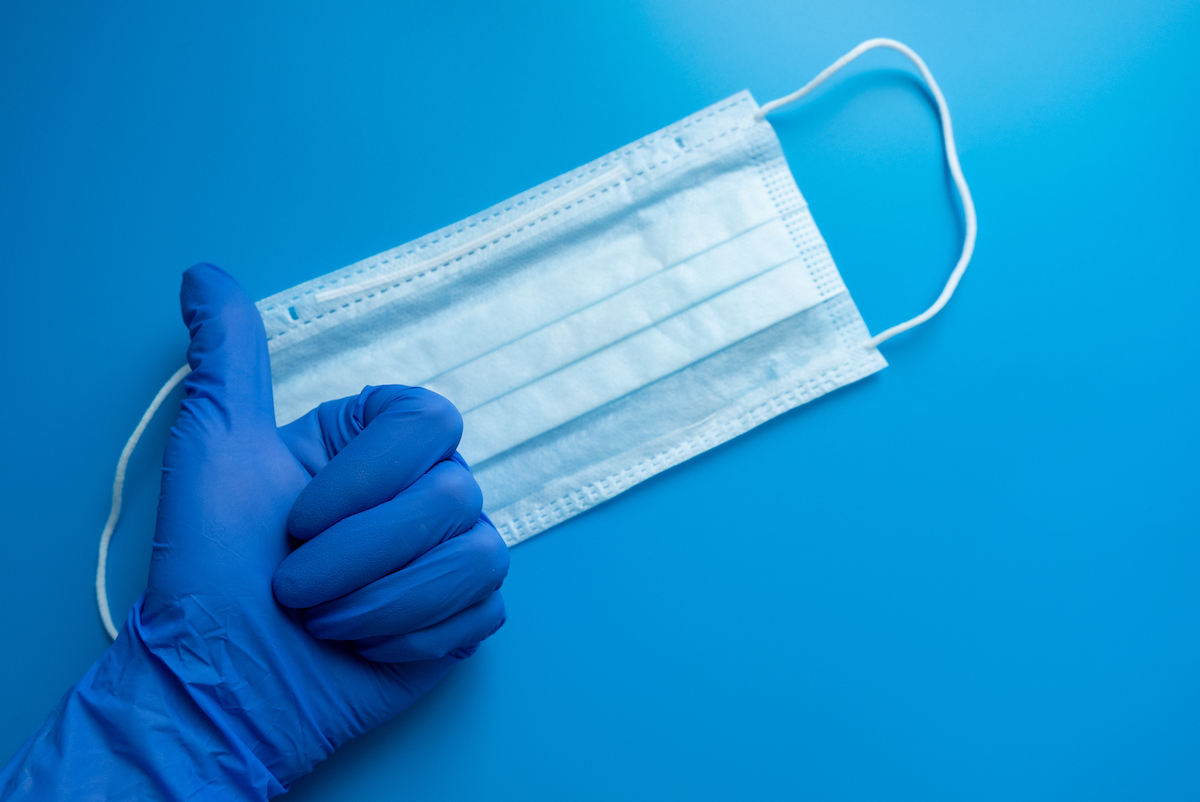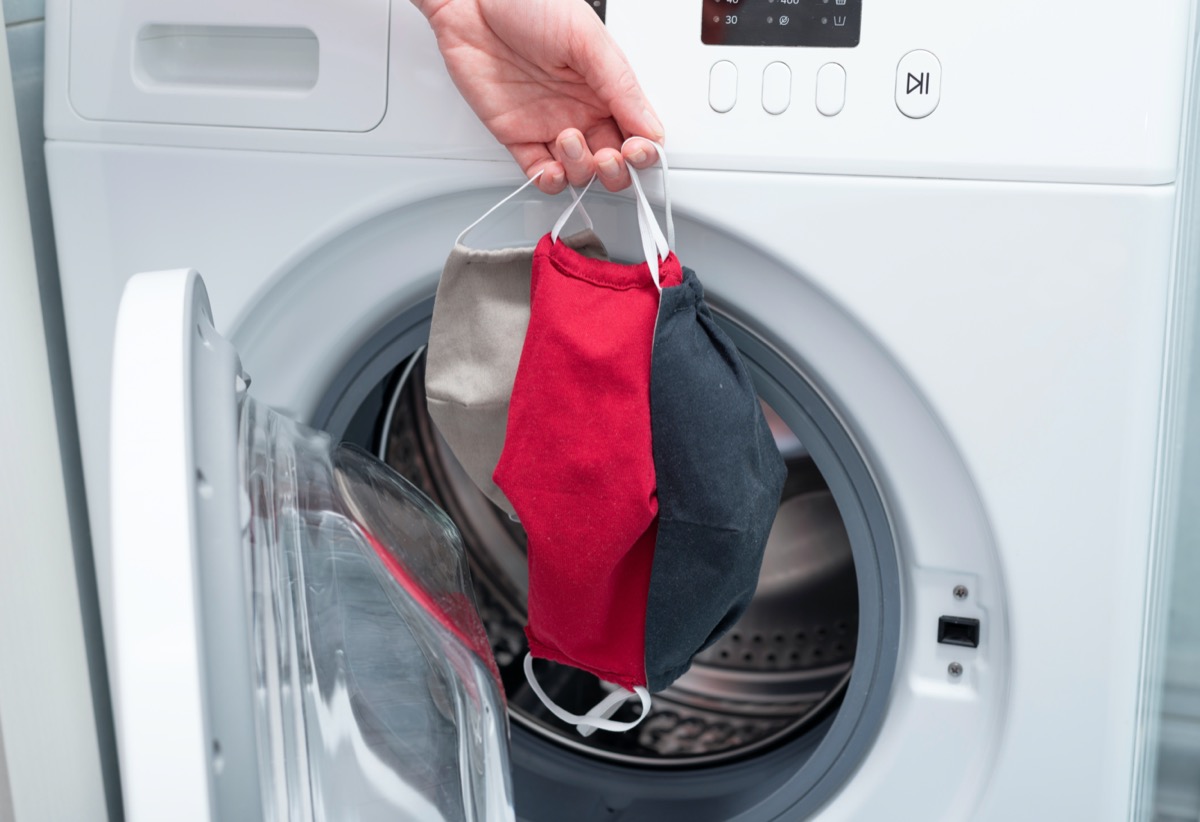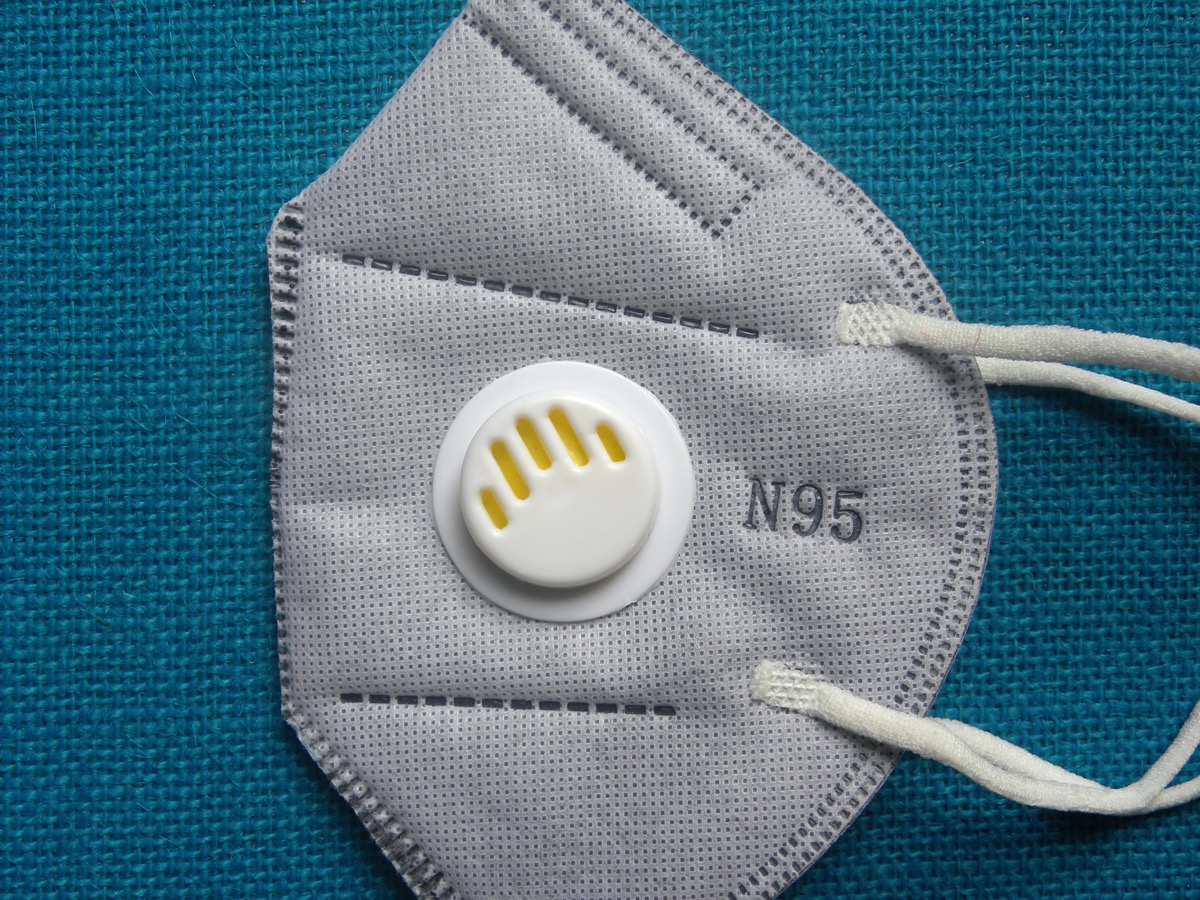The new research, published on Dec. 15 in the journal Physics of Fluids, comes from a team of scientists at California Baptist University and University of Massachusetts Lowell, who used a computer model to measure how masks affected the airflow and passage of particles to and from the wearer. The model also showed where particles landed on one’s face, in the nasal passages, and how they are distributed into the lungs and pharynx. The research determined that a new three-layer surgical mask is 65 percent efficient in filtering particles, but if the mask is worn out, that number drops to 25 percent. In fact, the researchers found that a worn down mask led the wearer to inhale more particles than those wearing no mask at all. Those particles that escape the filtration of your mask can enter through your respiratory tract and instead infect you. As a result, the researchers concluded that wearing a mask with less than 30 percent filtration efficiency can be worse than going out without a face covering. “It is natural to think that wearing a mask, no matter new or old, should always be better than nothing,” study author Jinxiang Xi, PhD, associate professor in the Department of Biomedical Engineering at University of Massachusetts Lowell, said in a statement. “Our results show that this belief is only true for particles larger than 5 micrometers, but not for fine particles smaller than 2.5 micrometers.” But there’s more to choosing the right masks than filtration prowess. Read on to see what to avoid when it comes to PPE, and for more on how to prepare yourself for your inoculation, check out The CDC Is Warning You to Prepare For These COVID Vaccine Side Effects. Read the original article on Best Life. In what is perhaps the golden rule of face coverings, mounting research points to the fact that your mask should have at least three layers of fabric if it’s going to protect you. In a recent study conducted by researchers at Virginia Tech University, 11 different types of face masks were tested, including nine cloth masks made from materials such as coffee filters, a cotton T-shirt, and other fabrics, as well as a face shield and surgical mask. The findings showed that masks that had three layers clearly offered the most protection. And for another ineffective face covering, check out This Type of Face Mask Isn’t Protecting You From COVID, WHO Warns. You wash your face. You wash your clothes. So shouldn’t you be washing the clothes you wear over your face? According to a meta-analysis published in September in BMJ Open, the answer is yes: research found that not washing cloth masks after use increases the risk of coronavirus contamination. Try to avoid the temptation to wear the same mask for days in a row and wash it after every use to make sure it’s actually doing its job. And for another face covering warning you need to know about, check out The FDA Just Issued a Warning Against This Kind of Face Mask.ae0fcc31ae342fd3a1346ebb1f342fcb On Dec. 1, the World Health Organization (WHO) updated its face mask recommendations, specifically calling out this form for PPE. The global health agency asserted that the use of face shields is inferior to face masks because shields fail to block the wearer’s exhaled droplets and are not able to stop them from inhaling another person’s aerosol droplets either. And for more regular updates on how to stay healthy, sign up for our daily newsletter. Researchers at the National Institute of Standards and Technology (NIST) recently found that face masks with ventilation valves actually help spread the coronavirus. Results of their study found that while regular N95 masks completely stop the passage of droplets, N95 masks outfitted with a ventilator valve do almost nothing to keep them from being passed along. And for more on when you can say goodbye to pleats on your PPE once and for all, check out Dr. Fauci Says This Is When You’ll Be Able to Throw Away Your Face Mask.



